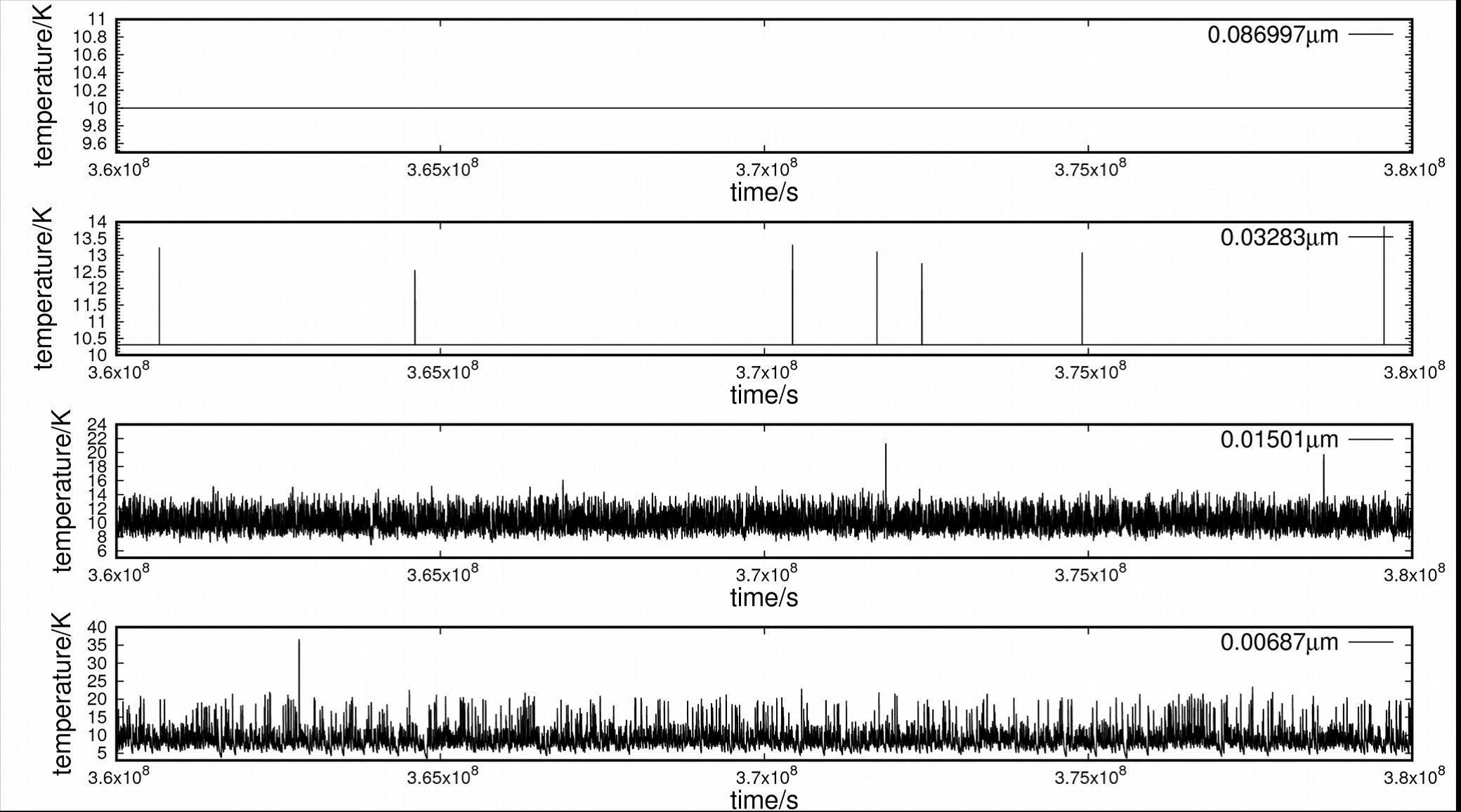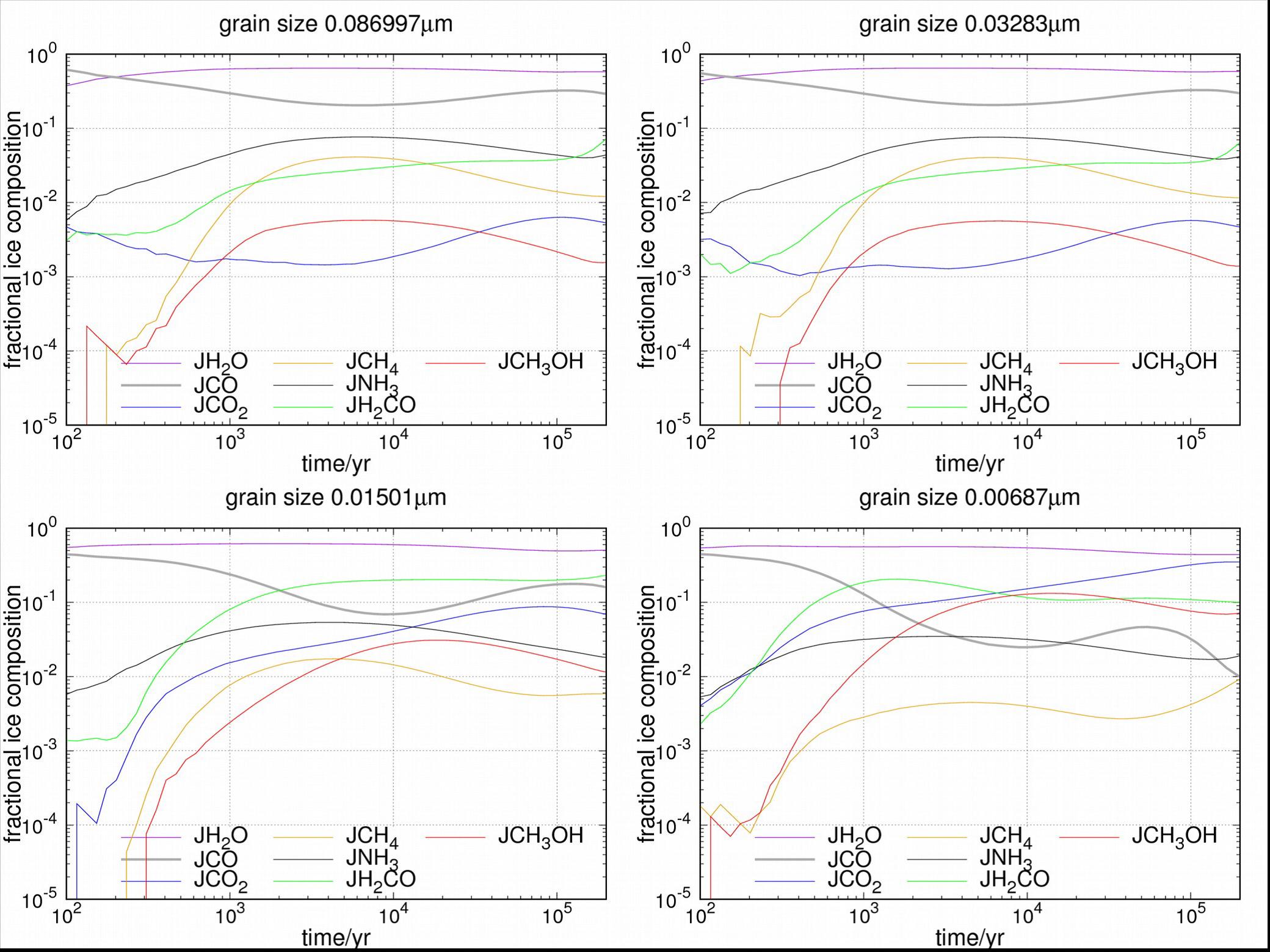A progress in grain surface chemistry has been archived in the astrochemical group of XAO by L. Chen under the advice of Prof. Chang.This work has been published in the Monthly Notices of the Royal astronomical Society(MNRAS).
Generally speaking, the radius of the dust grain used in the astrochemical models is set to 0.1 um, and its temperature is near 10 K in the cold dense clouds. Under such a low temperature, molecules can't efficiently diffuse in the grain surface. However, in the ISM, dust grain has a size distribution, which means there are grains smaller than the standard used dust grain. For the small size dust grain, its temperature can't represent by a constant value. This effect is called stochastic heating of dust grain. The stochastic grain heating is caused due to the absorption of photons. And, the stochastic grain heating is more efficient for small grain other than large grain.
In our studies, we calculated and simulated four different sizes of dust grains, Fig.1 in the below shows their grain temperature evolution. Meanwhile, we also simulate a large reaction network which including 653 species and 5942 reactions. It is interesting to see the ice chemistry under the effect of stochastic grain heating. Fig.2 shows the ice composition for different size of grains. On the other hand, we also found some kind of COMs, HCOOCH3, CH3OCH3, formed in the two smallest grains (see Fig.2). Because it’s hard to detected those COMs in the grain mantle, our future work is to study how those COMs desorbed to the gas phase.
Article link: https://doi.org/10.1093/mnras/sty1525

Fig.1 The grain temperature fluctuations for different size of grains.
The largest grain temperature is set to be constant, while as other grains can absorb different kinds of photons.

Fig.2 The ice composition for different kinds of grains. The major ice composition is H2O, CO, CO2, CH4, NH3, CH3OH.
We can see that the ice composition is different for different size of grains.